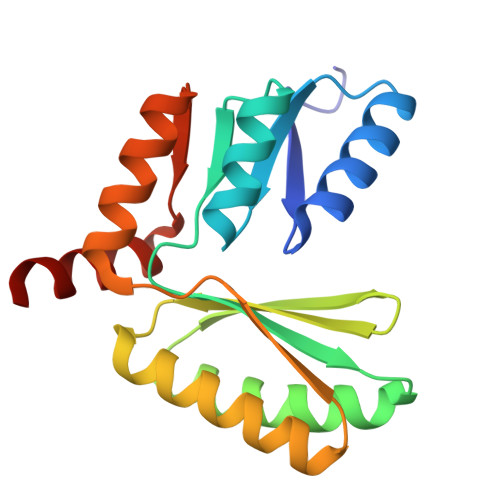Modular protein scaffold architecture and AI-guided sequence optimization facilitate de novo metalloenzyme engineering.
Wagner Egea, P., Delhommel, F., Mustafa, G., Leiss-Maier, F., Klimper, L., Badmann, T., Heider, A., Wille, I., Groll, M., Sattler, M., Zeymer, C.(2025) Structure
- PubMed: 41197620
- DOI: https://doi.org/10.1016/j.str.2025.10.010
- Primary Citation of Related Structures:
9QUC, 9QUD, 9QUI, 9QUL, 9QUO, 9QUP - PubMed Abstract:
Incorporating metal cofactors into computationally designed protein scaffolds provides a versatile route to novel protein functions, including the potential for new-to-nature enzyme catalysis. However, a major challenge in protein design is to understand how the scaffold architecture influences conformational dynamics. Here, we characterized structure and dynamics of a modular de novo scaffold with flexible inter-domain linkers. Three rationally engineered variants with different metal specificity were studied by combining X-ray crystallography, NMR spectroscopy, and molecular dynamics simulations. The lanthanide-binding variant was initially trapped in an inactive conformational state, which impaired efficient metal coordination and cerium-dependent photocatalytic activity. Stabilization of the active conformation by AI-guided sequence optimization using ProteinMPNN led to accelerated lanthanide binding and a 10-fold increase in k cat /K m for a photoenzymatic model reaction. Our results suggest that modular scaffold architectures provide an attractive starting point for de novo metalloenzyme engineering and that ProteinMPNN-based sequence redesign can stabilize desired conformational states.
- Center for Functional Protein Assemblies & Department of Bioscience, TUM School of Natural Sciences, Technical University of Munich (TUM), 85748 Garching, Germany.
Organizational Affiliation:


















